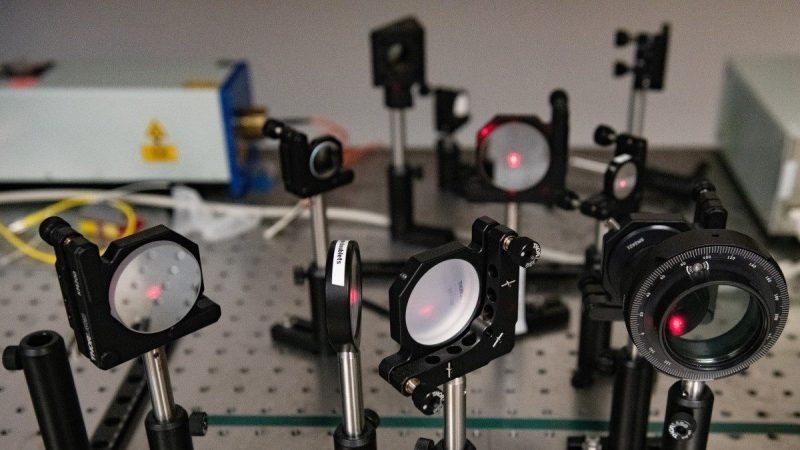As it turns out, a great deal of plastics are thrown away every year, a waste which feels ever growing. Still, as reported by Sci-Tech Daily, there may be help on the way from our good friend, the laser!
The research paper from the University of Texas outlines the use of lasers for breaking down tough plastics into their baser components. The method isn’t quite as simple as fire a laser off at the plastic, though. First, the material must be laid on a special two-dimensional transition metal dichalcogenide material — a type of atomically-thin semiconductor at the very forefront of current research. When the plastics are placed under the right laser light in this scenario, carbon-hydrogen bonds in the plastic are broken and transformed, creating new chemical bonds. Done right, and you can synthesize luminescent carbon dots from the plastic itself!
“By harnessing these unique reactions, we can explore new pathways for transforming environmental pollutants into valuable, reusable chemicals, contributing to the development of a more sustainable and circular economy,” says Yuebing Zheng, a leader on the project. “This discovery has significant implications for addressing environmental challenges and advancing the field of green chemistry.”
Sure it’s a bit trickier than turning old drink bottles into filament, but it could be very useful to researchers and those investigating high-tech materials solutions. Don’t forget to read up on the sheer immensity of the world’s plastic recycling problems, either. If you’ve got the solution, let us know!
















Just burn it. It’s made of oil.
this, it’s free energy, just filter out the smoke.
Or do something like this: https://hackaday.com/2023/11/15/diesel-station-wagon-runs-on-plastic/
First you have to do the dirty work and collect it.
Only tangentially related to the article, but on the subject of microplastics, if used plastic could be melted and turned into meter cubes, then buried, wouldn’t that problem eventually go away?
https://www.circularise.com/blogs/r-strategies-for-a-circular-economy
The problem of microplastic is also caused by the usage itself.
Plastic wears out.
And collecting all of the plastic waste is an utopia IMO.
All of this “circular economy” things miss the point. We have to use/produce less plastic, not more.
The solution to microplastics is to simply stop using plastic for packaging and maybe 80% of other current uses. Find something else to use for a while like in the old days. It’s not melting or burning or lasering or whatever else, that will inevitably create more just because you’re rounding up, transporting, and processing all the plastic.
Lets start with getting rid of those painful plastic clamshell containers that everyone hates. Please give me the cardboard box.
Turn it into butter.
https://amp.theguardian.com/science/article/2024/jul/16/us-startup-lab-made-climate-friendly-butter-savor-bill-gates
Something really needs to be done about that guy.
Like maybe have him take the vaccines he developed and put that “butter” on his free range bread?
First questions should be: if this is scaled up to any useful size, what are the other waste outputs of the process, how much energy does it use, how much demand is there for the recycled product.
This has been done before:
https://www2.afpm.org/forms/store/ProductFormPublic/am-91-62-hazardous-waste-recycling-via-high-temperature-thermal-distillation.
For the distillation unit described, ideally, the plastic should be pelletized then just fed into the unit. Very energy intensive, but this has been exhaustively researched and looked at by lots of people. In short, doable but prohibitively expensive.
What? No link to the Hackaday article about turning discarded plastics into diesel ⛽ fuel?
https://hackaday.com/2023/11/15/diesel-station-wagon-runs-on-plastic/
This process sounds like a test tube economy situation. Most plastics let loose are from fast food and convenience. Plastic cannot be recycled without a through washing and drying first, because of food. Something which is easy to take care of at a restaurant or at home with washing of dinnerware.
Sounds like a hard solution to the wrong question.
It reminds me of an ad that ran in a magazine early in the last century (back when potato bugs were a problem and a dollar was a decent day’s pay for a laborer):
Kill Potato Bugs!
Guaranteed 100 percent success!
Send $1 to
What the rube got for their hard-earned day’s pay was a little wooden mallet, a block of wood, and instructions that read: “Place a potato bug on the wood block and strike it with the mallet.”
It seems this scheme is about that useful.